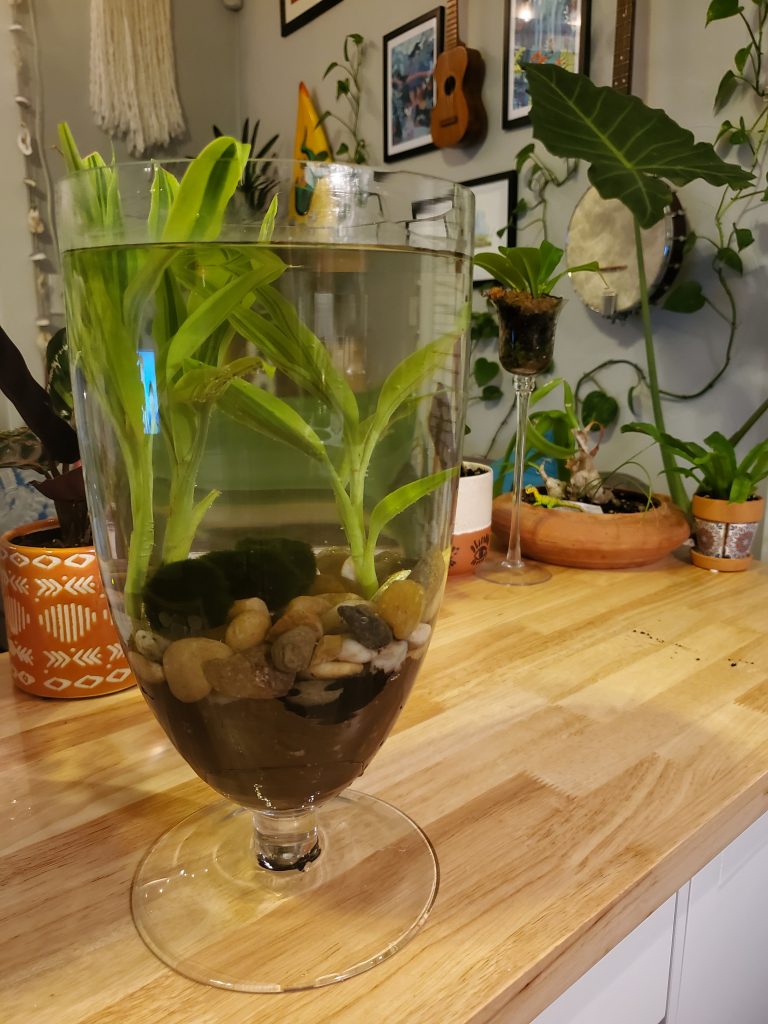Tabletop Water Gardens
As the houseplant trend takes off, people everywhere are watching their collections grow, and searching for the next addition. While perusing your local nurseries and plant stores, take a trip to a pet store and explore the aquarium plants! There’s a whole new world of green waiting for a spot on your shelf!
Things to keep in mind with the aquatic plants—some are totally submergent, and others are emergent, meaning they like to have some leaf material growing above the water level. First, You’ll need a container, and thankfully I have quite the collection I’ve amassed from thrift stores. Just make sure it’s tall enough for your plant, clear, and be sure to clean the container thoroughly. Next, choose your gravel, preferably the aquarium-grade kind, and rinse well! This is where you can really get creative with your design. Some plants can grow in gravel alone, but I chose to add aquarium soil. Optionally, you can add some charcoal into the mix to help with water quality. Thoroughly rinse your plants in lukewarm water, and place in the container, add more medium, then top off with the gravel of your choice. Use a spoon or knife to get more specific placement. Not only does the gravel help support the plants as they establish, but it keeps the substrate from floating as you add in water. If you’re using tap water, leave a container out overnight, and make sure it’s not too cold (room temperature is ideal).
Make sure your container is in bright light most of the day (if you have grow lights – even better!) and keep away from drafty areas. Trim off brown leaves as they occur, and please, resist the urge to add some aquatic friends! Bettas seem like a common choice, but they require a minimum size tank of ten gallons, filters, and regulated temperatures to live healthy lives. If you think your plants look a little lonely, have some fun with it and add small, sterilized toys like toy dinosaurs! The options to customize are endless! In the video below, I’ve used the Golden Sword plant that’s tolerant of lower light, and paired it with some marimo moss balls. You can add some cuttings of things like pothos for more interest as well! As for long term care, local pet stores carry aquatic plant food (read labels CAREFULLY), and ‘sludge removers’ which can be used if your creation starts to develop algal growth.
 Finally, please NEVER dispose of aquarium plants in or near bodies of water. Many plants have been introduced to foreign ecosystems and become invasive, disrupting the natural progression of habitats. A common example is parrot’s feather, which quickly takes over bodies of water, crowding out native plants and making areas uninhabitable by local wildlife.
Finally, please NEVER dispose of aquarium plants in or near bodies of water. Many plants have been introduced to foreign ecosystems and become invasive, disrupting the natural progression of habitats. A common example is parrot’s feather, which quickly takes over bodies of water, crowding out native plants and making areas uninhabitable by local wildlife.





